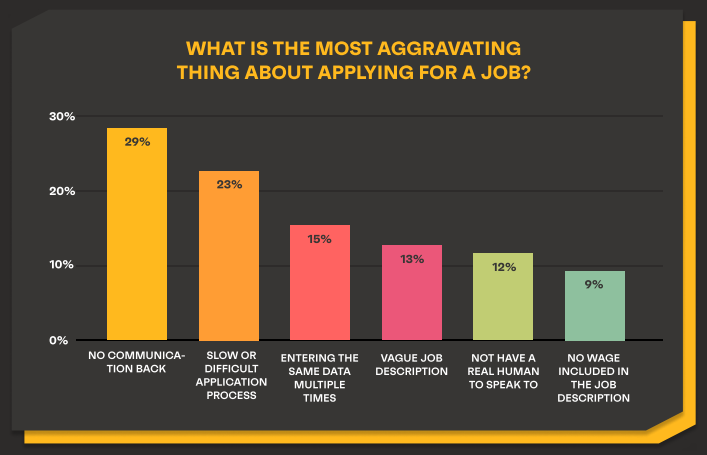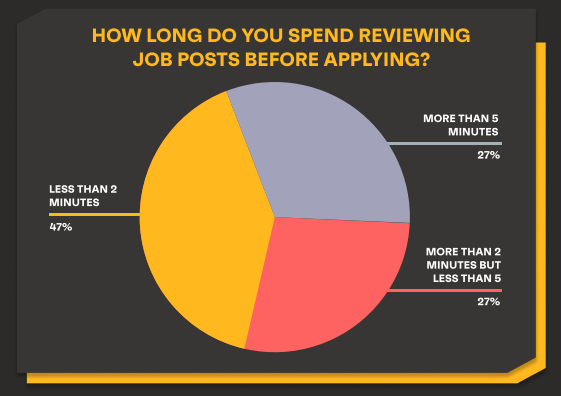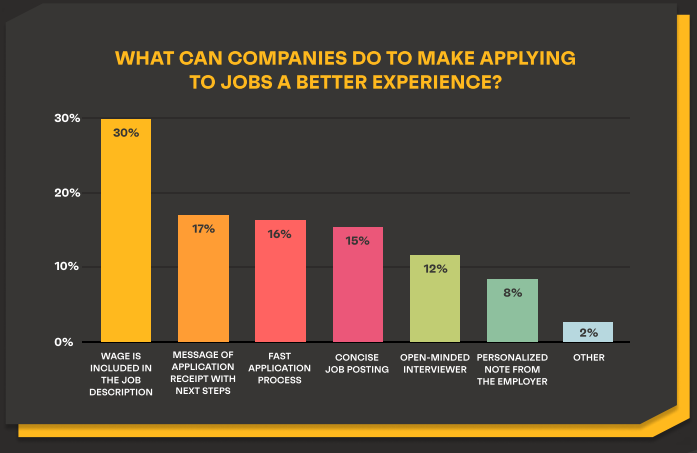Recruiting and Hiring The Canadian Worker: A FindWRK Report (Part Three)
Great recruiting means engaging your candidates where they are!
The findings in part three of “A Picture of the Hourly Workforce” will help you start with an understanding of what the job search actually feels like, then identify ways to differentiate yourself!
There are a variety of reasons someone might start a job search. Two-thirds of workers in this segment of the market don’t look for a job when they have one, they look for a job when they need one.
This has significant implications on the recruiting process. Speed is important, your candidates won’t wait to compare multiple opportunities. And many candidates will be searching during a period of stress. Strong communication and empathy go a long way to differentiate you as an employer. Take a look at the the spark that starts the job search for the Canadian hourly worker.
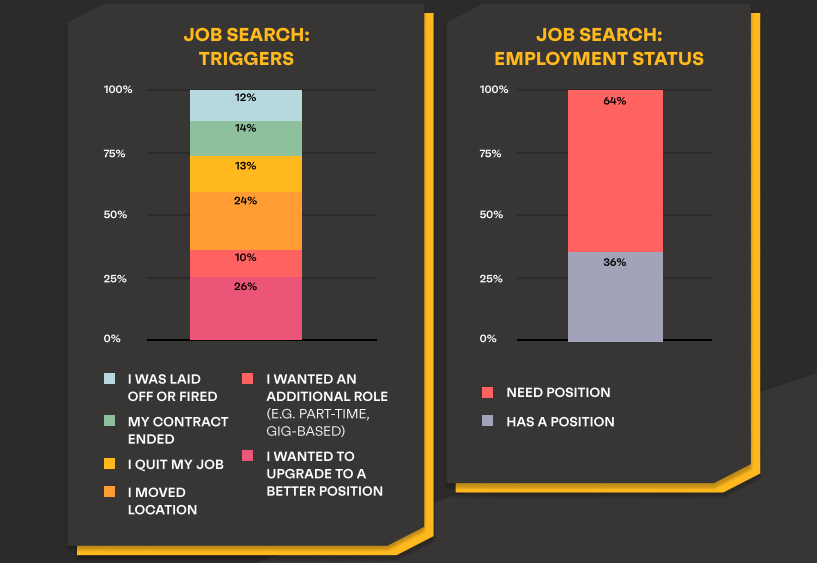
The Need For Speed
Hourly workers don’t spend long securing a job – remember, most are looking when they are in need of one. According to the report, one-third spend less than a month looking. Furthermore, almost two thirds find a job in less than 3 months. The longer your recruiting process, the more likely you are to lose great candidates.
FindWrk spoke with Canadian worker, Ana, who said, “When you’ve been looking for months, it’s something like fight or flight mode that takes over. You don’t have time to process an offer. You just take it and maybe that’s because of all the stress that has mounted—paying your bills, and putting in endless applications. You just want some peace of mind.”
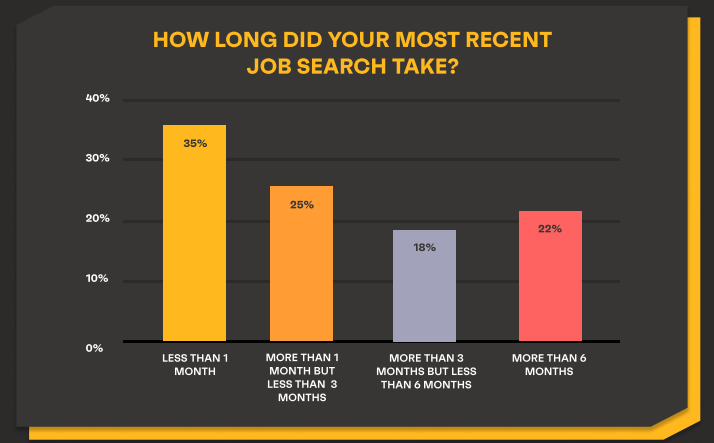
Sometimes job hunting can be a full time grind itself, and often times job seekers quickly become frustrated with the grind and pay less attention to each individual application. According to FindWRK, the job search is complicated and exasperating. It induces stress and encourages you to click on as many jobs as possible without doing research, or looking for best fit.
This means that applying for jobs has become a volume game. It’s easy to one-click apply and attention spans are shrinking. This is even more true for those under 35, where almost half apply to more than 25 jobs during a job search. When candidates prioritize volume, building a connection becomes that much more difficult.
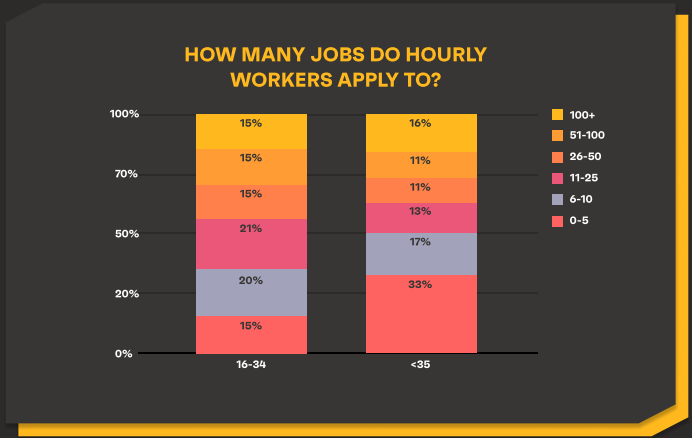
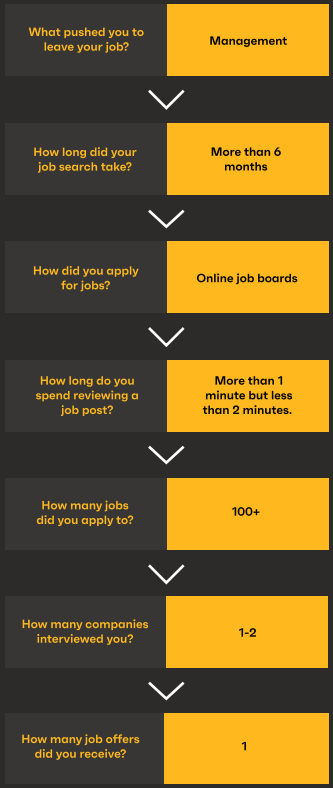
Online Platforms Leading Job Application Route
Applying for jobs via online platforms is second nature, it’s by far the most common method. And that’s true across all ages of workers. The ease of online applications has reinforced the volume nature of the process. The result is a lack of human connection. In many cases, a candidate will have to click through dozens of screens over multiple days before connecting with a human. It’s easy to feel overlooked and move on.
FindWRK found that the largest percentage of hourly workers apply through Indeed, followed closely by company websites and then Linkedin. In line with the lack of human connection, less than 25% apply for jobs in person.
The issue with the volume game is that qualified candidates are deterred by the current process. Over 40% of candidates are discouraged from applying to a job because of the process. It could be that it takes too much effort and time or that the job post is too long or confusing. These candidates feel qualified but choose not to apply. Making improvements to your process will improve your flow of candidates.
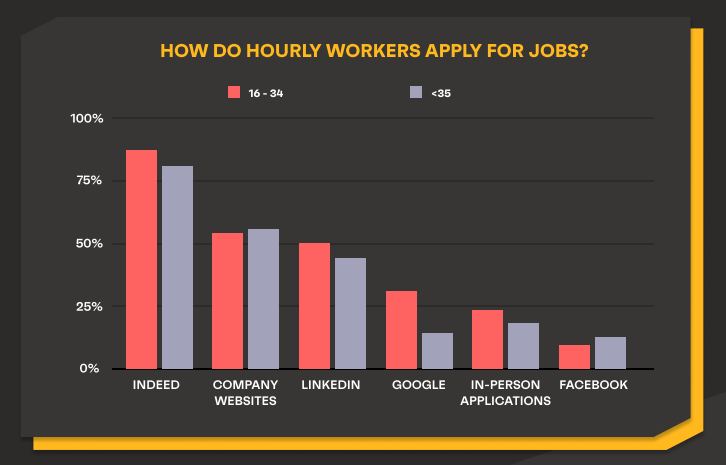
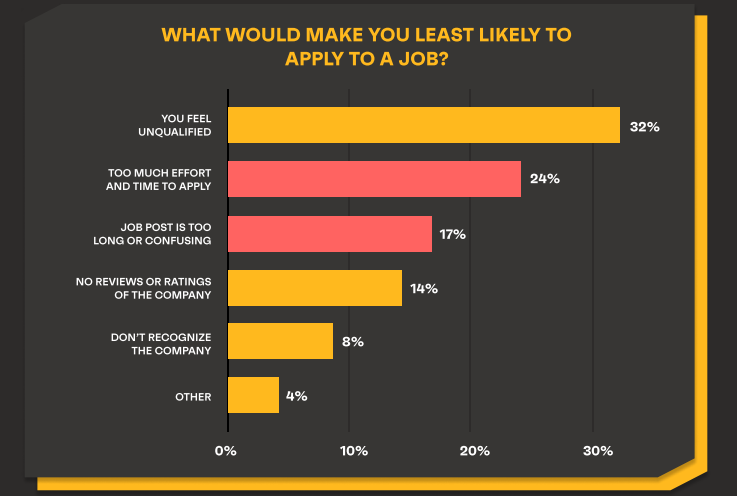
Frustration in the Process Causes Ghosting
We now understand more about the job search: candidates spend limited time reviewing job posts, they apply to a high volume of roles, and it’s overwhelmingly digital. It’s not a human process. And when candidates don’t feel a connection, it’s no surprise that they move on without communication. Ghosting is the symptom of underlying issues with the application and interview process. When we asked candidates about why they ghost, the underlying issues weren’t surprising. Lack of clarity (particularly around wage), lack of communication, and lack of empathy. According to Recruitment Expert ,Val Upfold, your job description should be so short that you can read it on your phone. Another thing, pay transparency is huge for Gen Z. They want that information in front of them.
Clarity and transparency are the areas where recruiters can improve their application process. Including wage in the job description directly addresses one of the primary reasons candidates ghost – and it’s a simple change. After that, find areas to improve communication and streamline the process.
FindWRK is a human-led platform that reimagines a more efficient way to recruit hourly workers.
To read the hourly worker report click here
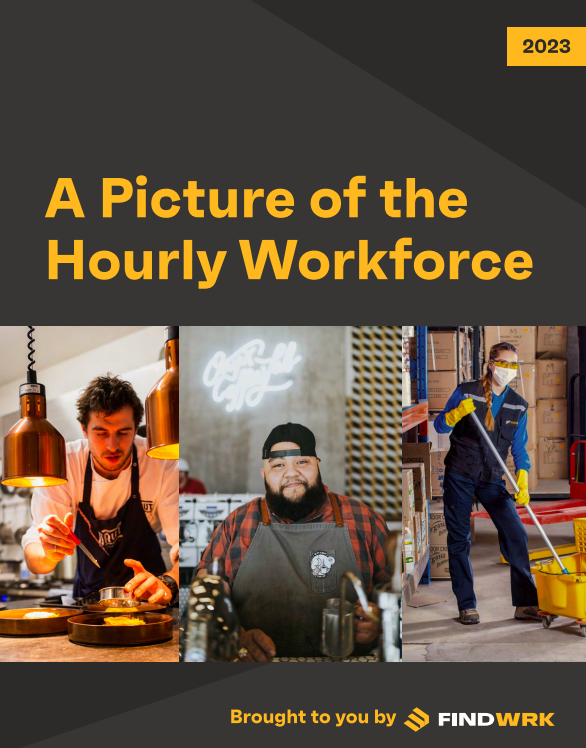
FindWRK has conducted in-depth workplace analysis of the Canadian workplace in its 2023 Edition of a Picture of the Hourly Workforce. In part one of this series, we take a look into the size of the hourly workforce, demographics, segments and their respective career priorities.
“FindWRK was designed to provide efficiency without sacrificing human connection. In minutes you can build a shortlist of select candidates that meet your needs and canvas them for interest. Then connect directly with those that fit and have intent. The first connection made with the candidate is a human one. And you start your relationship off on the right foot.” says Michael Wallace, CEO FindWRK
The folks at FindWRK spend every day talking with workers, and understand how challenging the job search is, digging deeper into the worker experience with one mission – to find out why? Their research stems from the intersection of technology and the recruiting process. They found that, if done right, recruiting balances the digital and the human. But increasingly that human connection was being lost. This analysis explores the biggest trends in hourly work and offer solutions to these complex problems.

